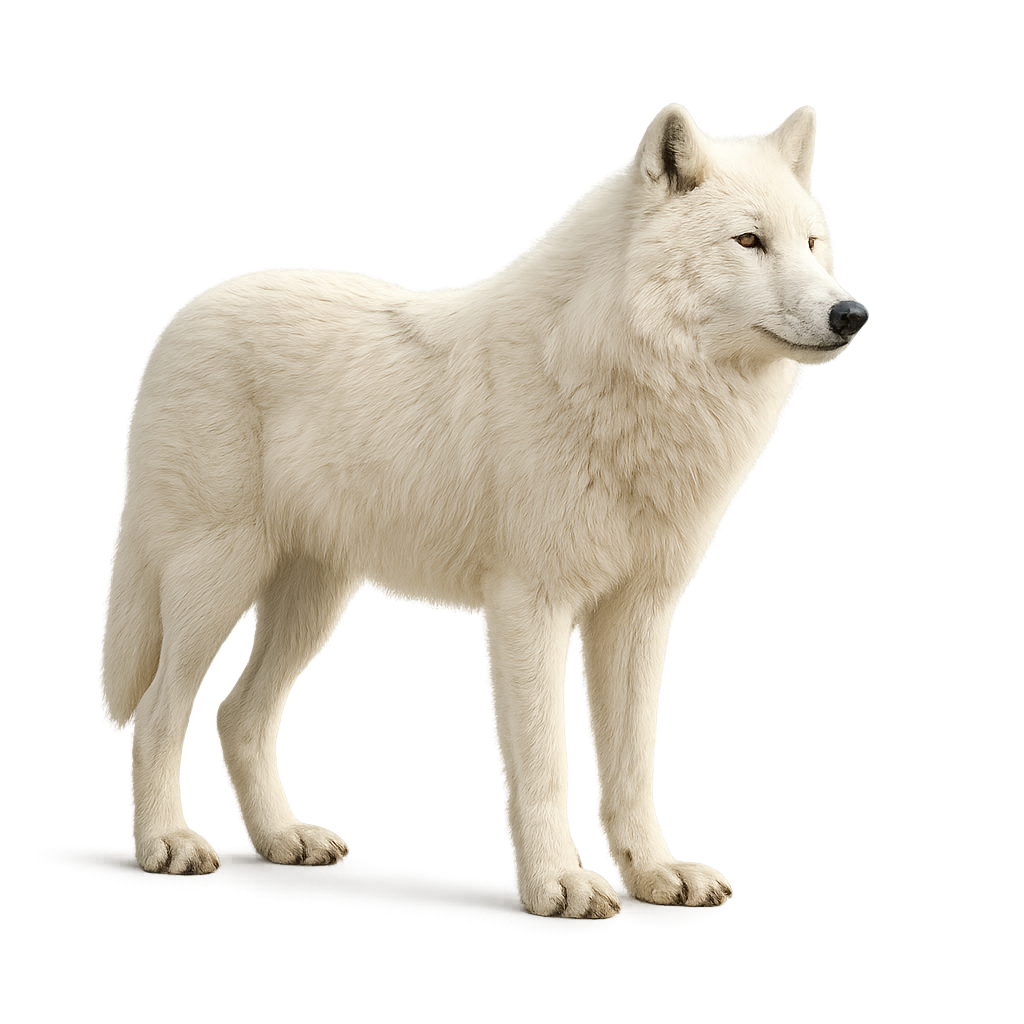Your wildlife photography guide.
Explore the arctic wolf in detail, study its behavior, prepare your shots.
Where to observe and photograph the arctic wolf in the wild
Learn where and when to spot the arctic wolf in the wild, how to identify the species based on distinctive features, and what natural environments it inhabits. The WildlifePhotographer app offers tailored photography tips that reflect the arctic wolf’s behavior, helping you capture better wildlife images. Explore the full species profile for key information including description, habitat, active periods, and approach techniques.
Arctic wolf
Scientific name: Canis lupus arctos

IUCN Status: Least Concern
Family: CANIDAE
Group: Mammals
Sensitivity to human approach: Suspicious
Minimum approach distance: 100 m
Rut period: March to April
Gestation: 60-63 jours
Births: May to June
Habitat:
Tundra, boreal forests, and Arctic mountains of North America, Northern Europe, and Greenland
Activity period :
Mainly active at night, generally discreet during the day.
Identification and description:
The Arctic Wolf is a subspecies of the gray wolf, primarily found in the cold and snowy regions of the Arctic, particularly in northern Canada, Alaska, and Greenland. It measures about 1.5 to 2 meters in length, including its tail, and weighs between 30 and 50 kg, with males generally being larger than females. Its coat is thick and pure white, allowing it to blend perfectly into the snowy landscapes. This wolf has evolved to adapt to the extreme conditions of its environment, with wide paws that allow it to walk in deep snow, and dense fur that protects it from the cold. The Arctic Wolf lives in family groups, typically consisting of 5 to 10 individuals, who hunt together for prey such as caribou, birds, and other mammals. Although this subspecies is adapted to its environment, it is vulnerable to climate change, which affects the distribution of its prey and natural habitat. The Arctic Wolf is also threatened by hunting and habitat loss due to human activity.
Recommended lens:
400 mm – adjust based on distance, desired framing (portrait or habitat), and approach conditions.
Photography tips:
Use a telephoto lens to photograph the Arctic wolf, particularly when it is hunting or moving in groups across the tundra. The soft light of the morning or evening is ideal for capturing the beauty of its white fur.
Be discreet and respect their space, as these animals are very wary and can be easily disturbed.
The WildlifePhotographer App is coming soon!
Be the first to explore the best nature spots, track rutting seasons, log your observations, and observe more wildlife.
Already 1 430 wildlife lovers subscribed worldwide

